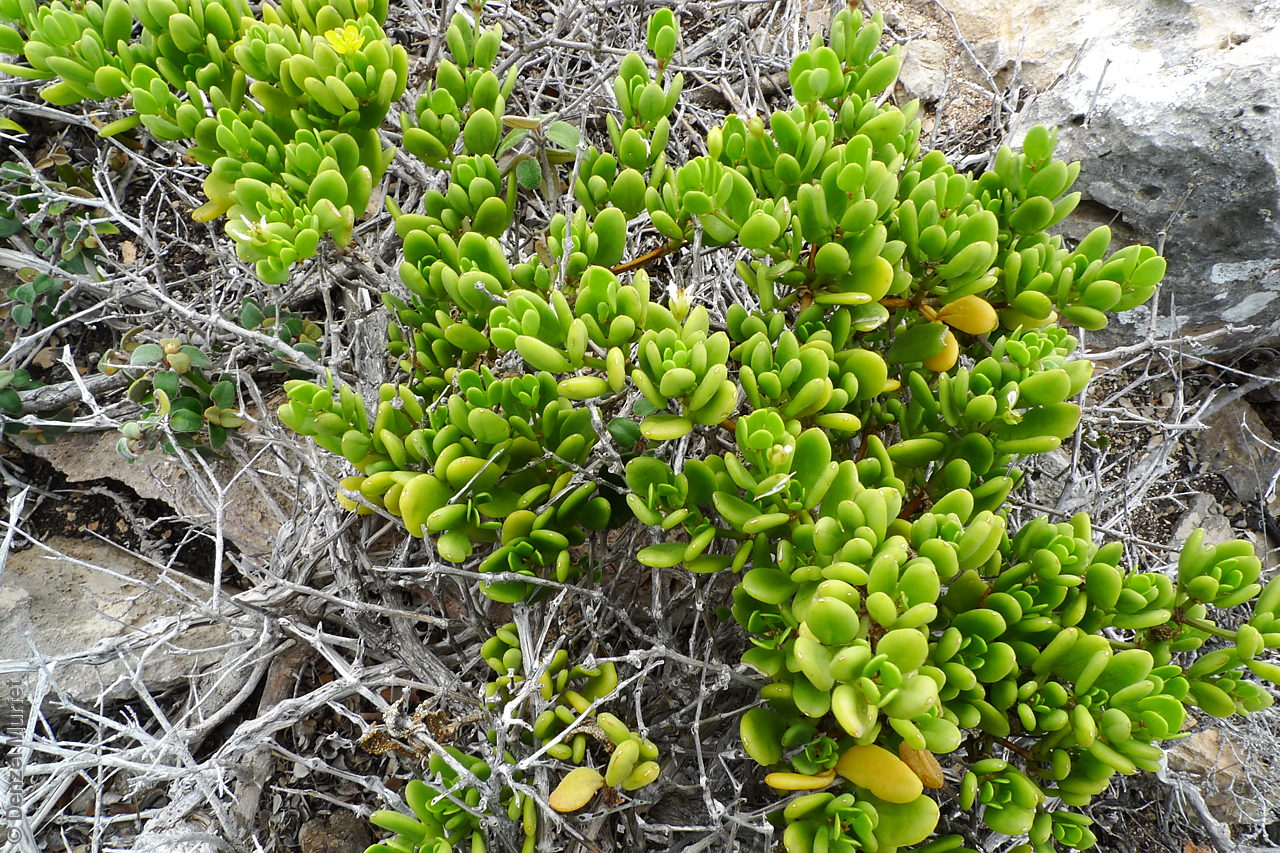

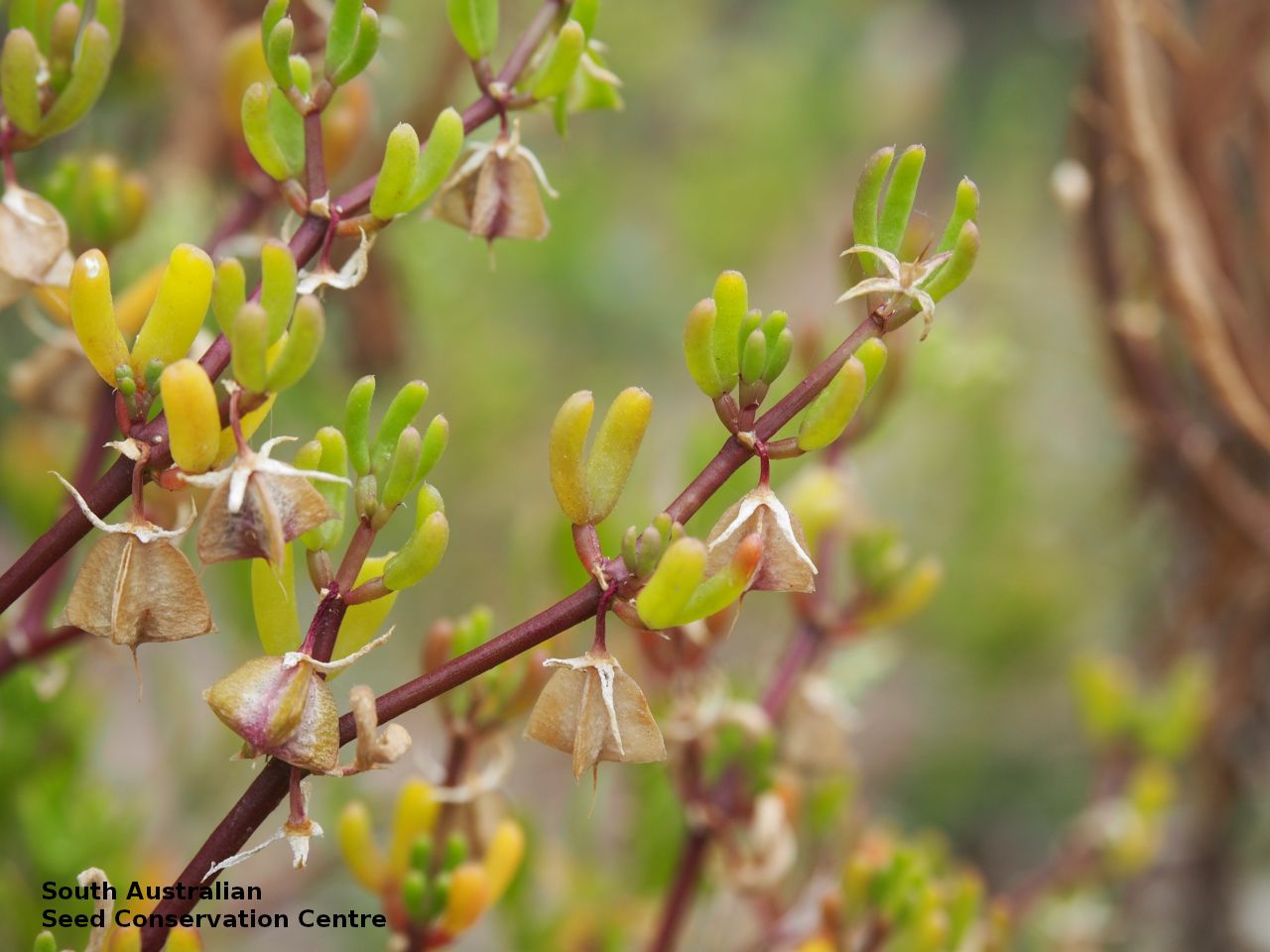

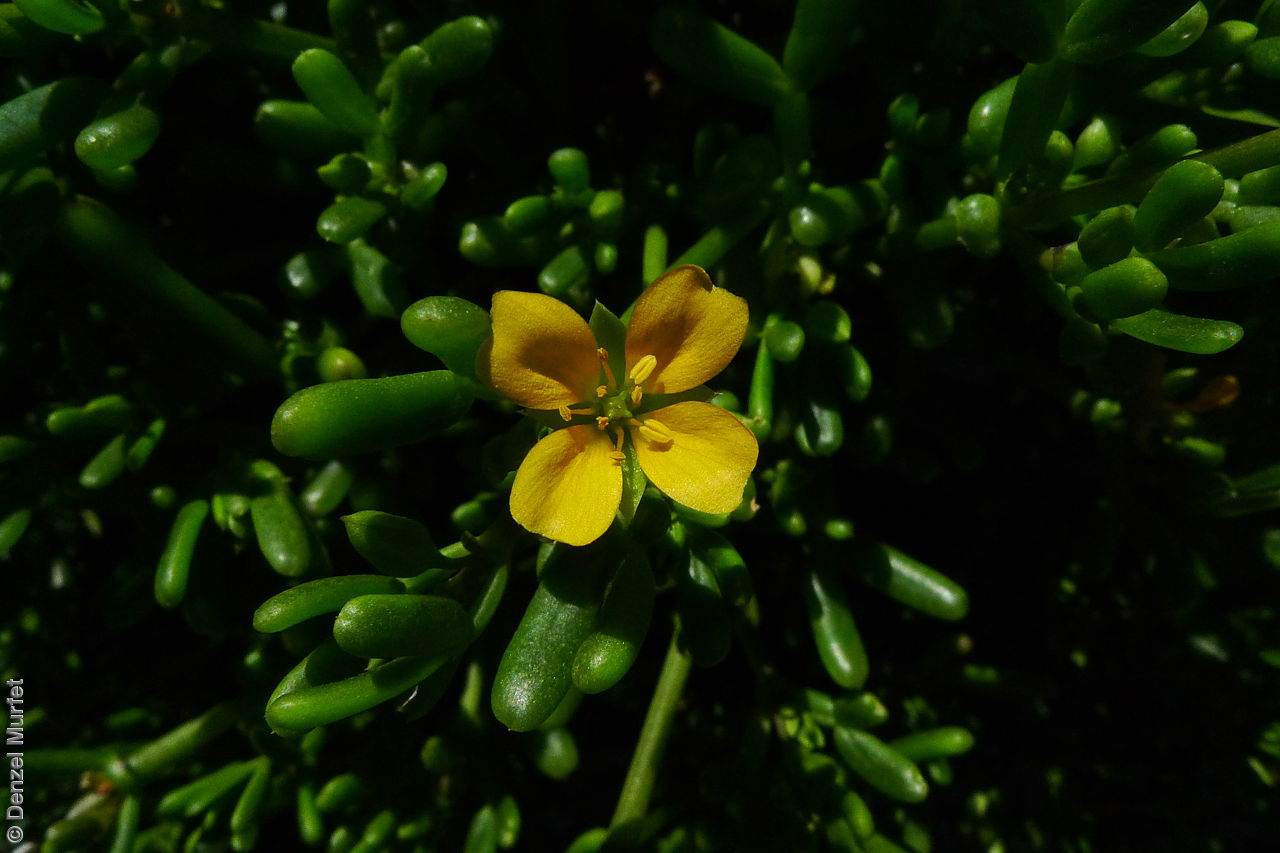
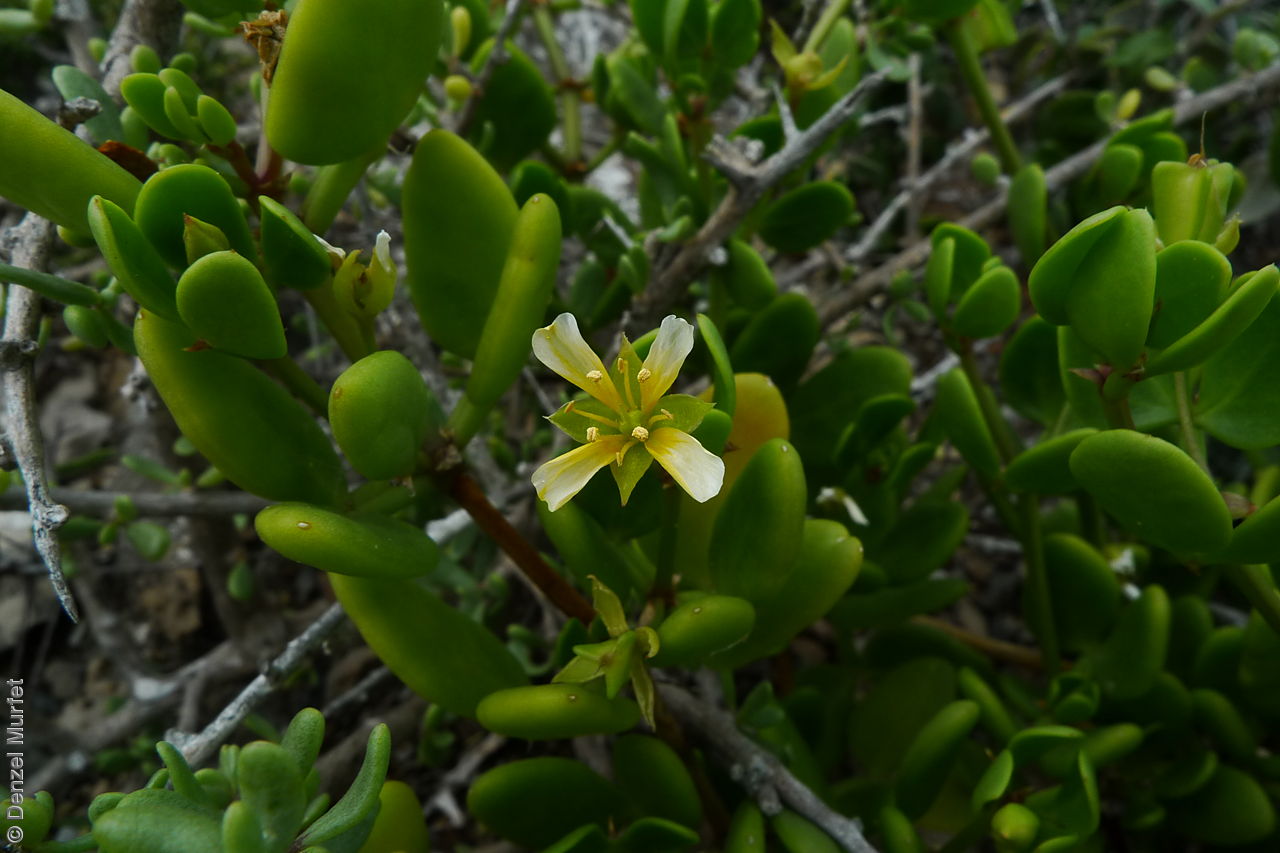

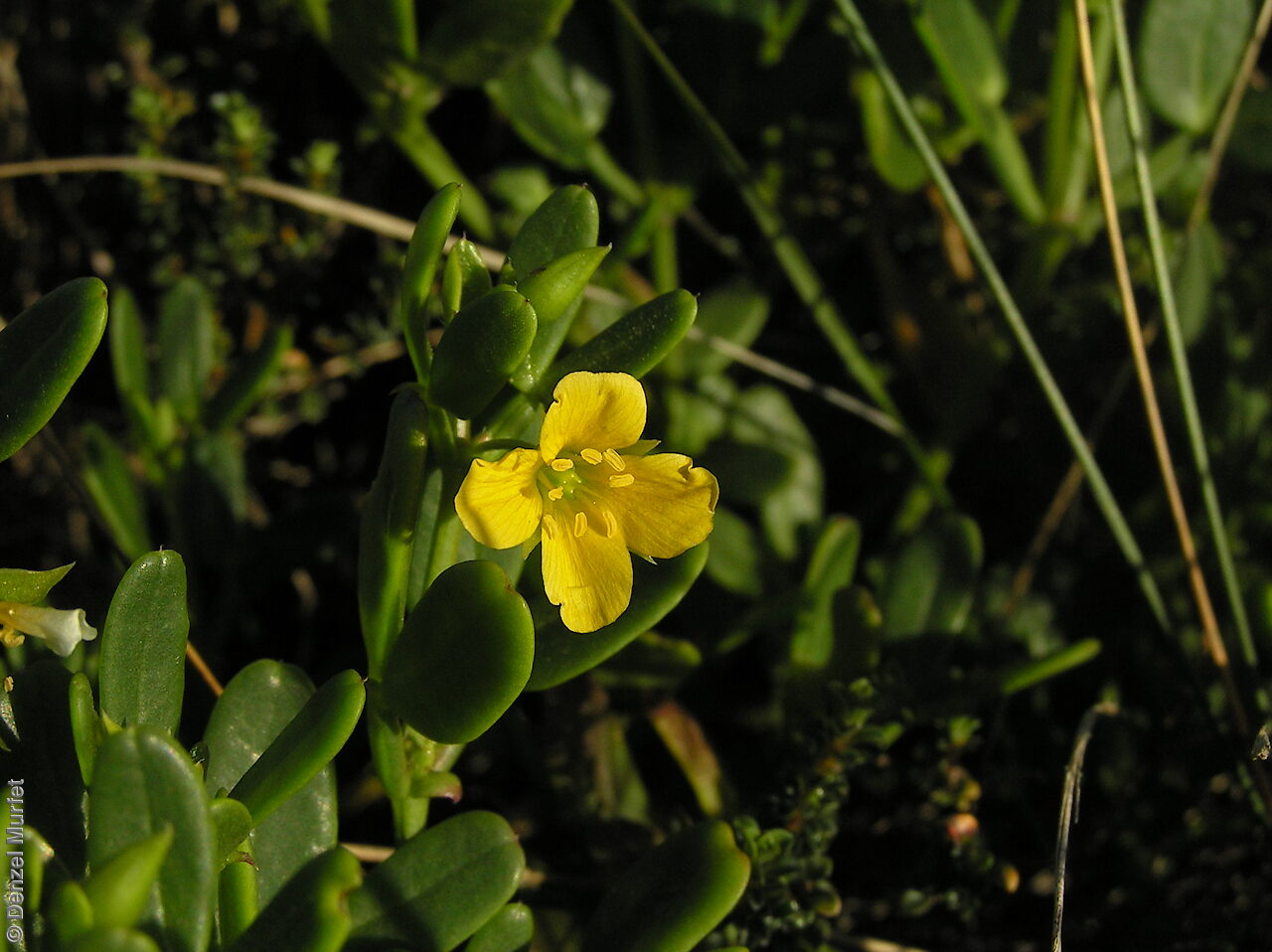
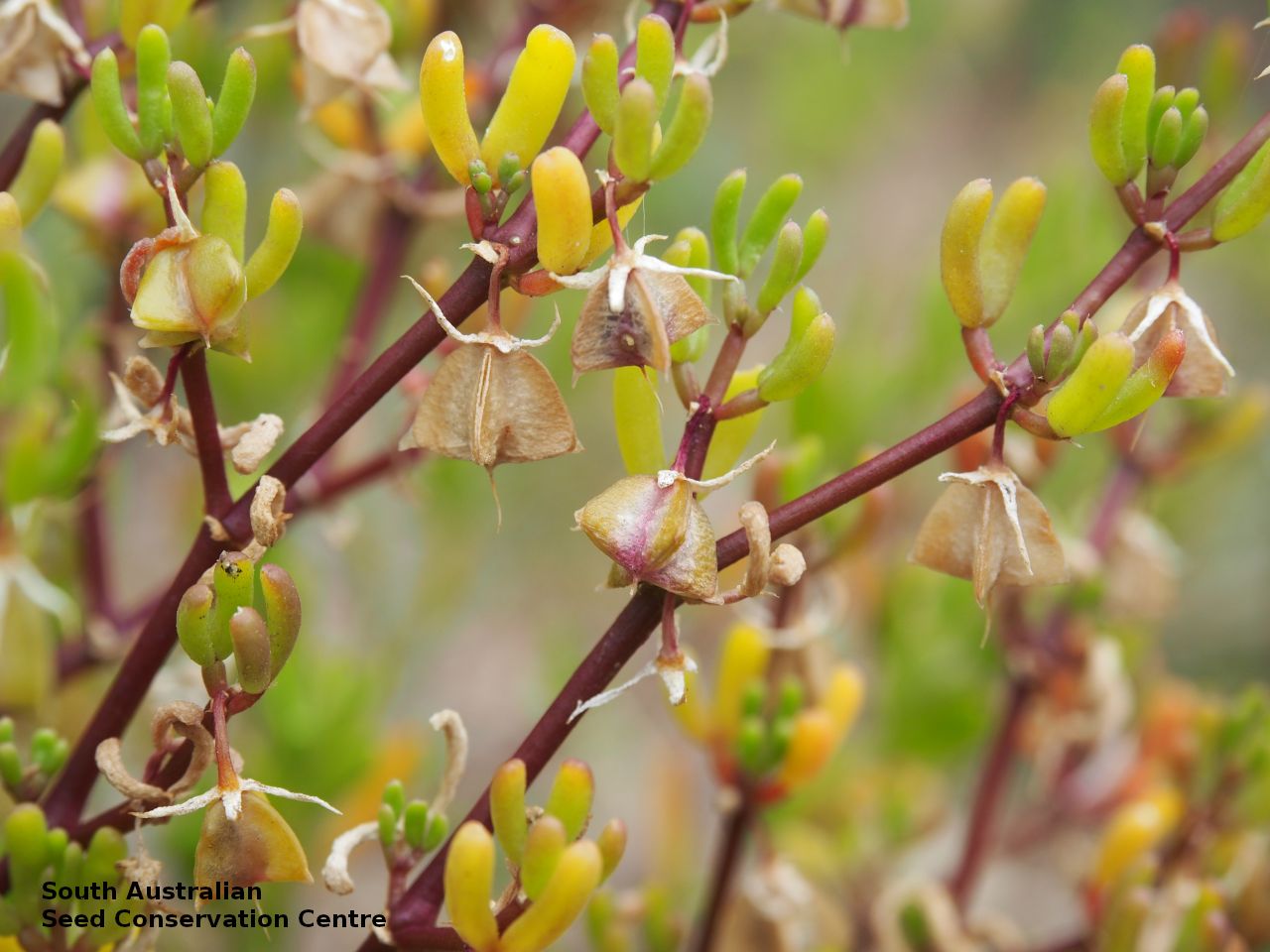
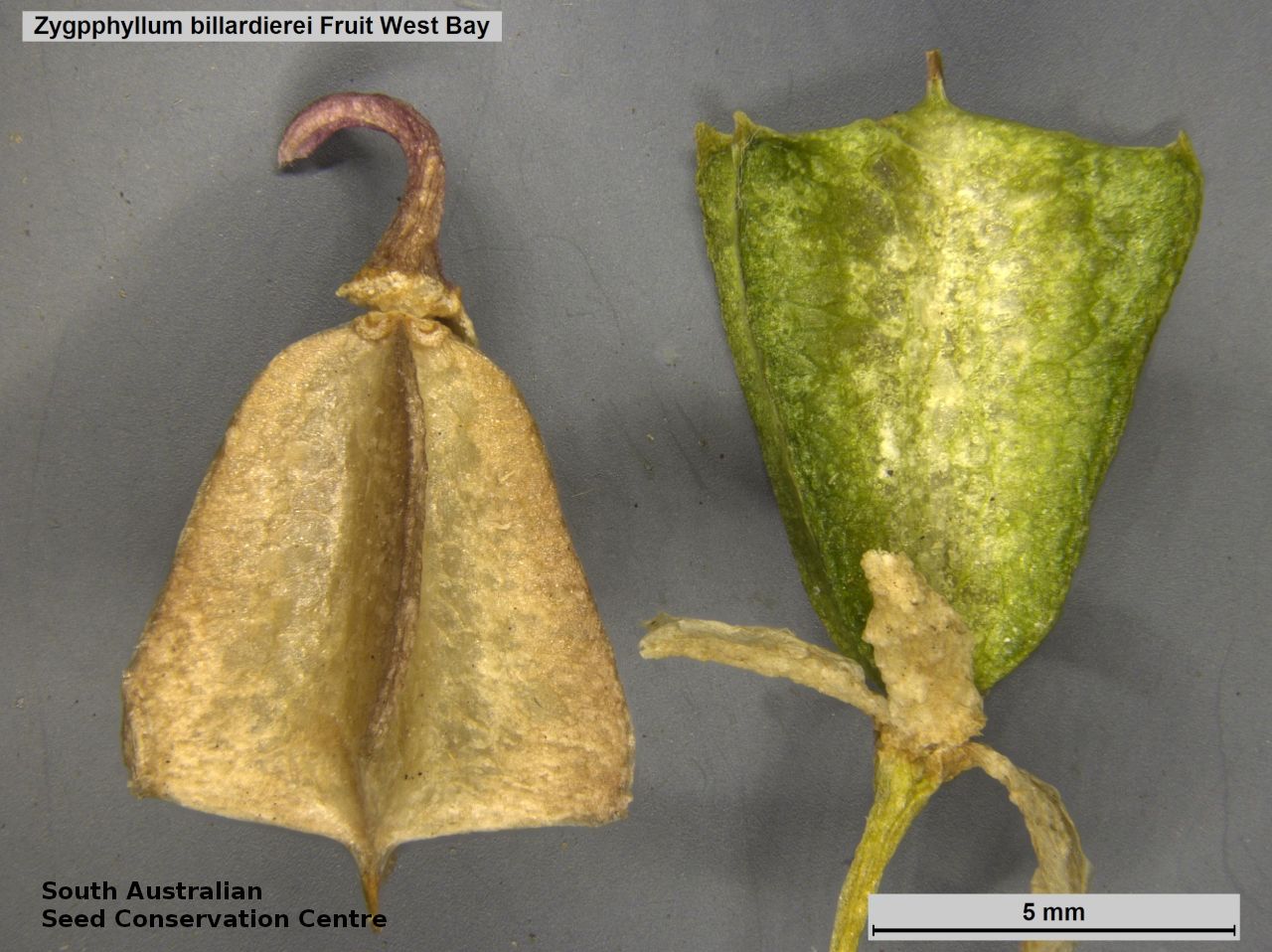
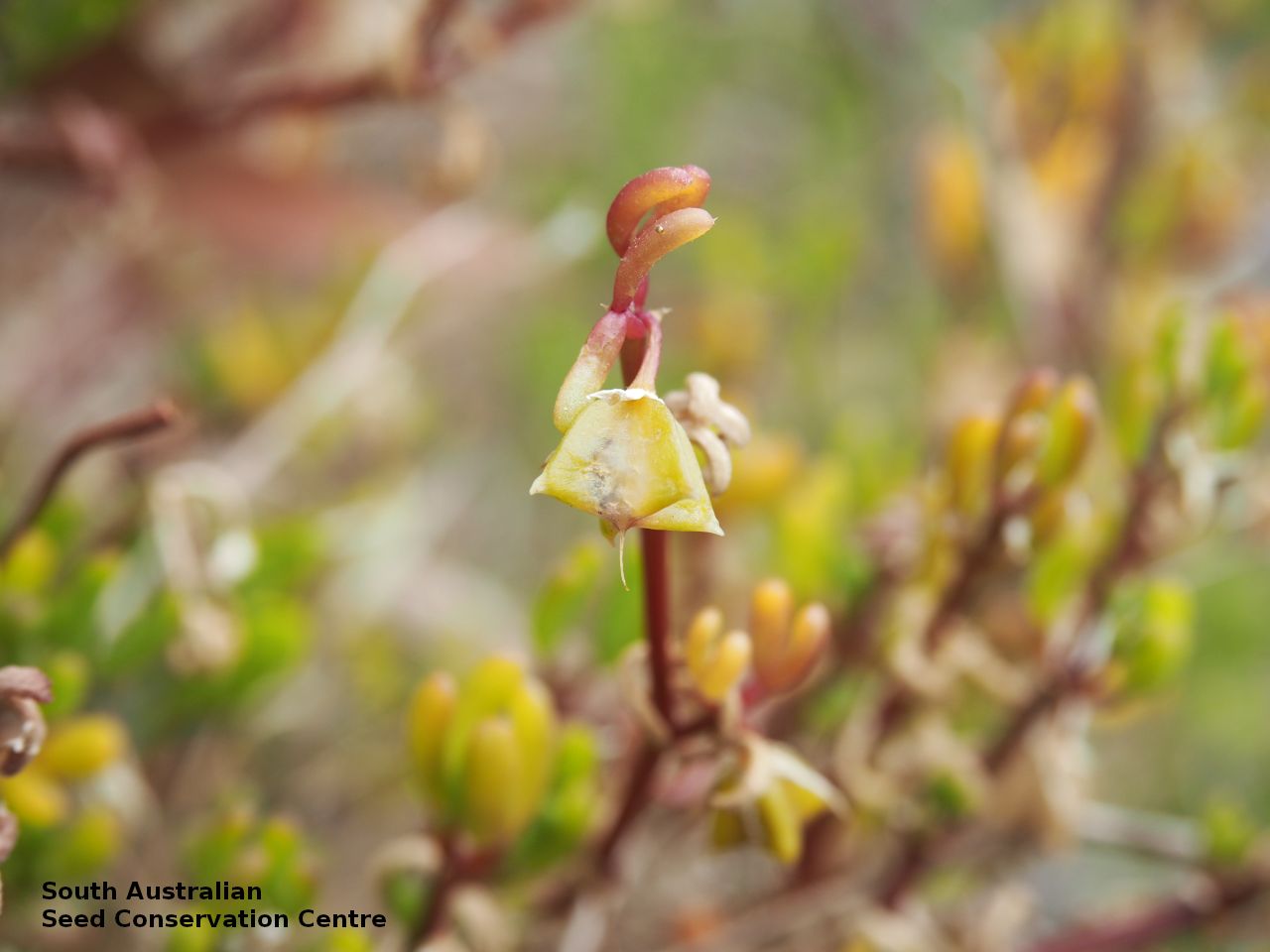
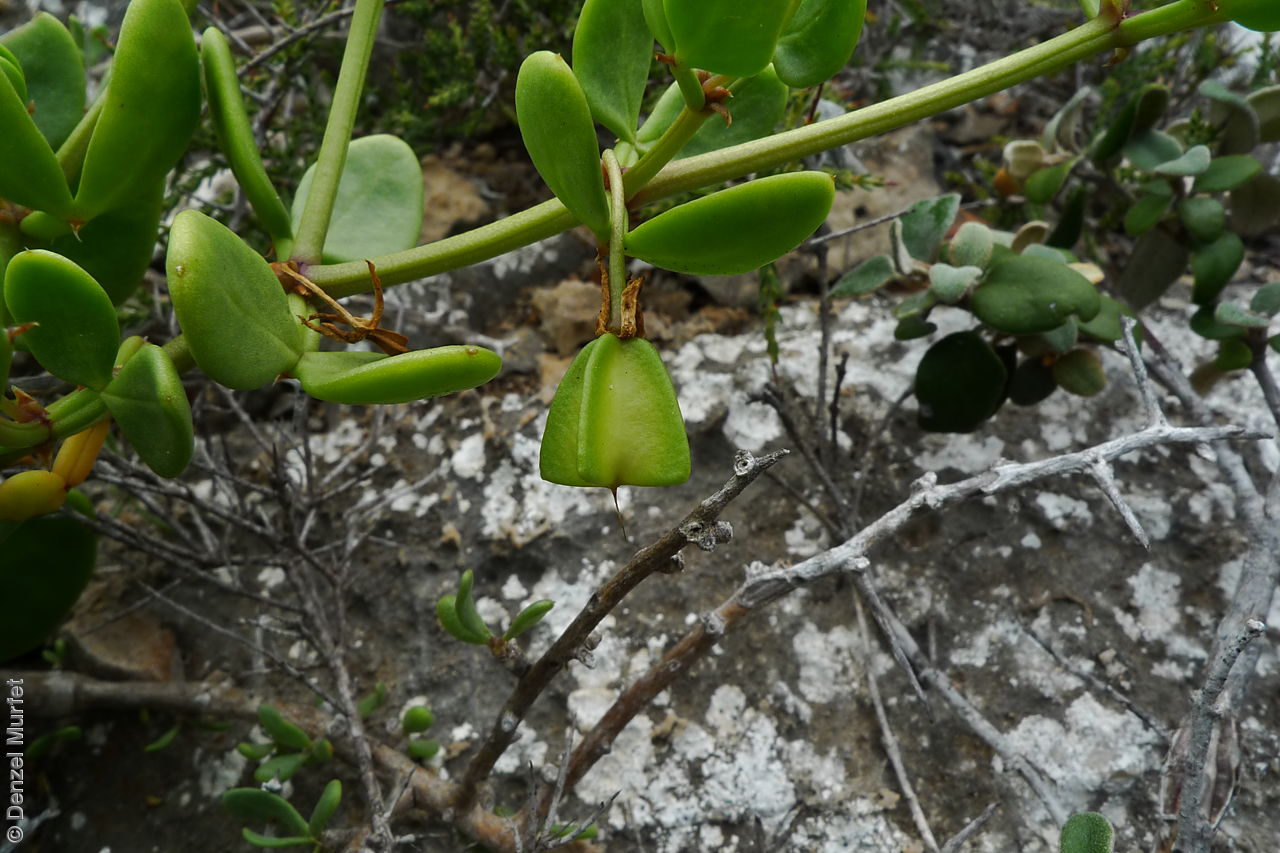


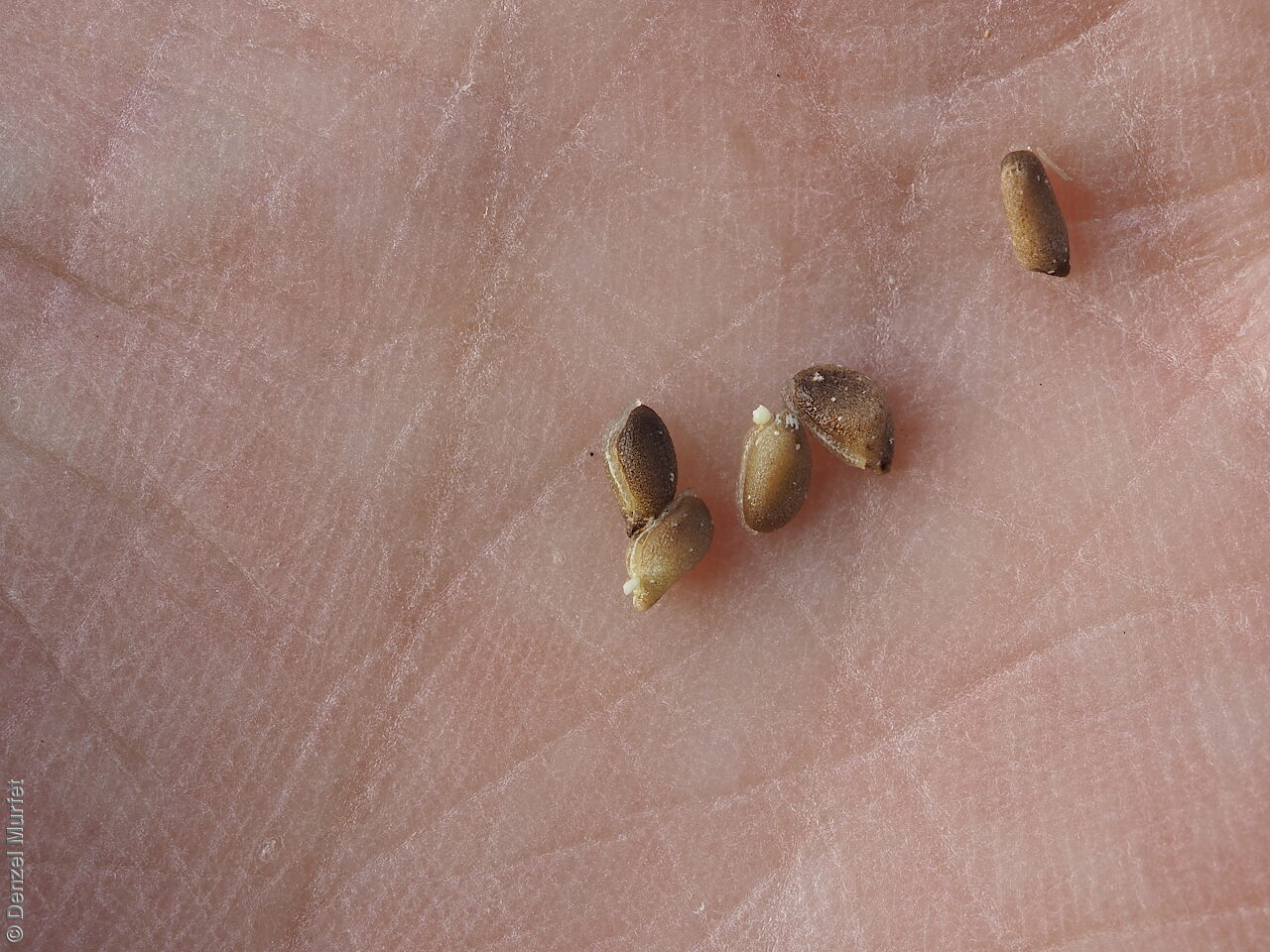
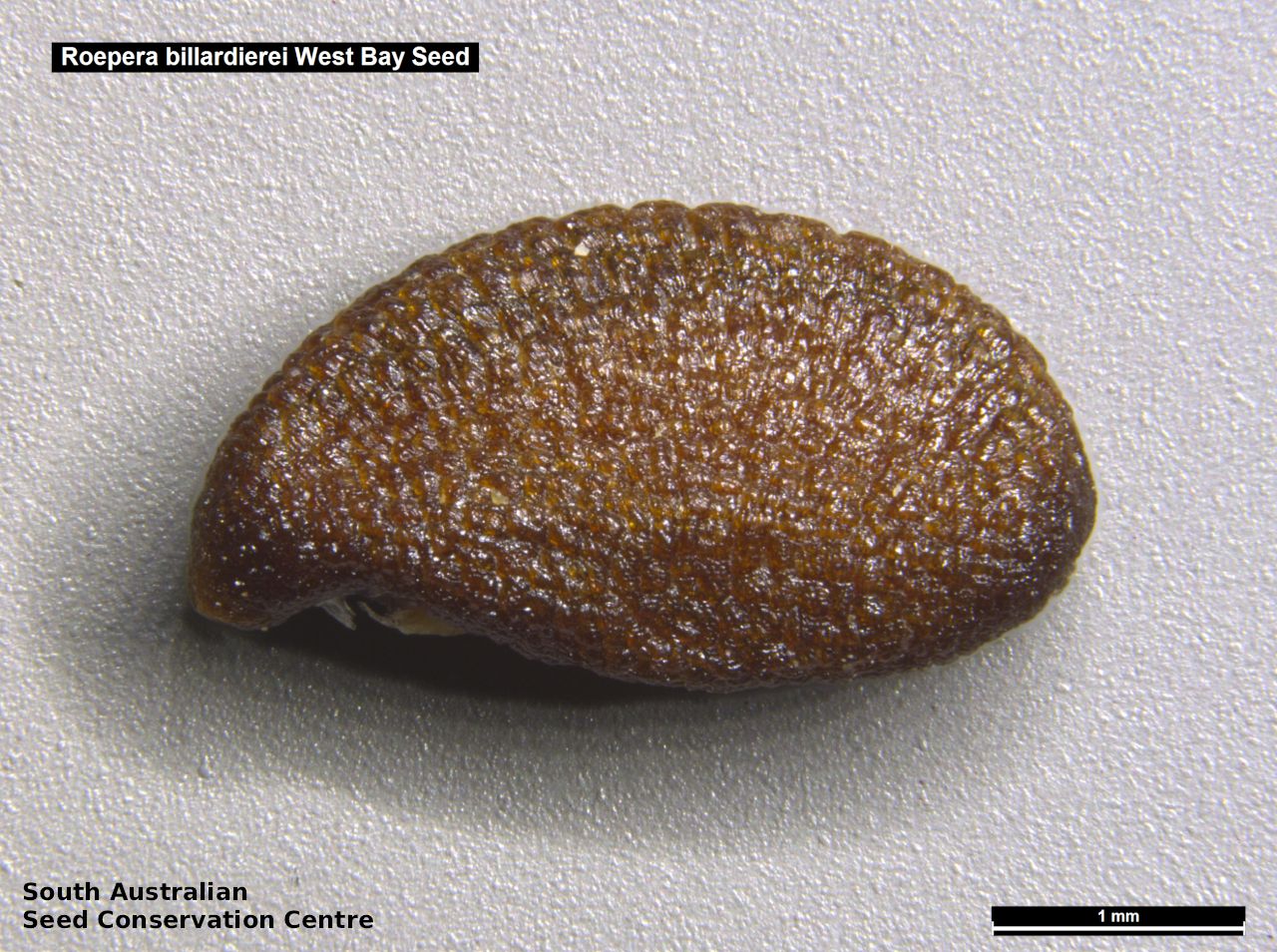
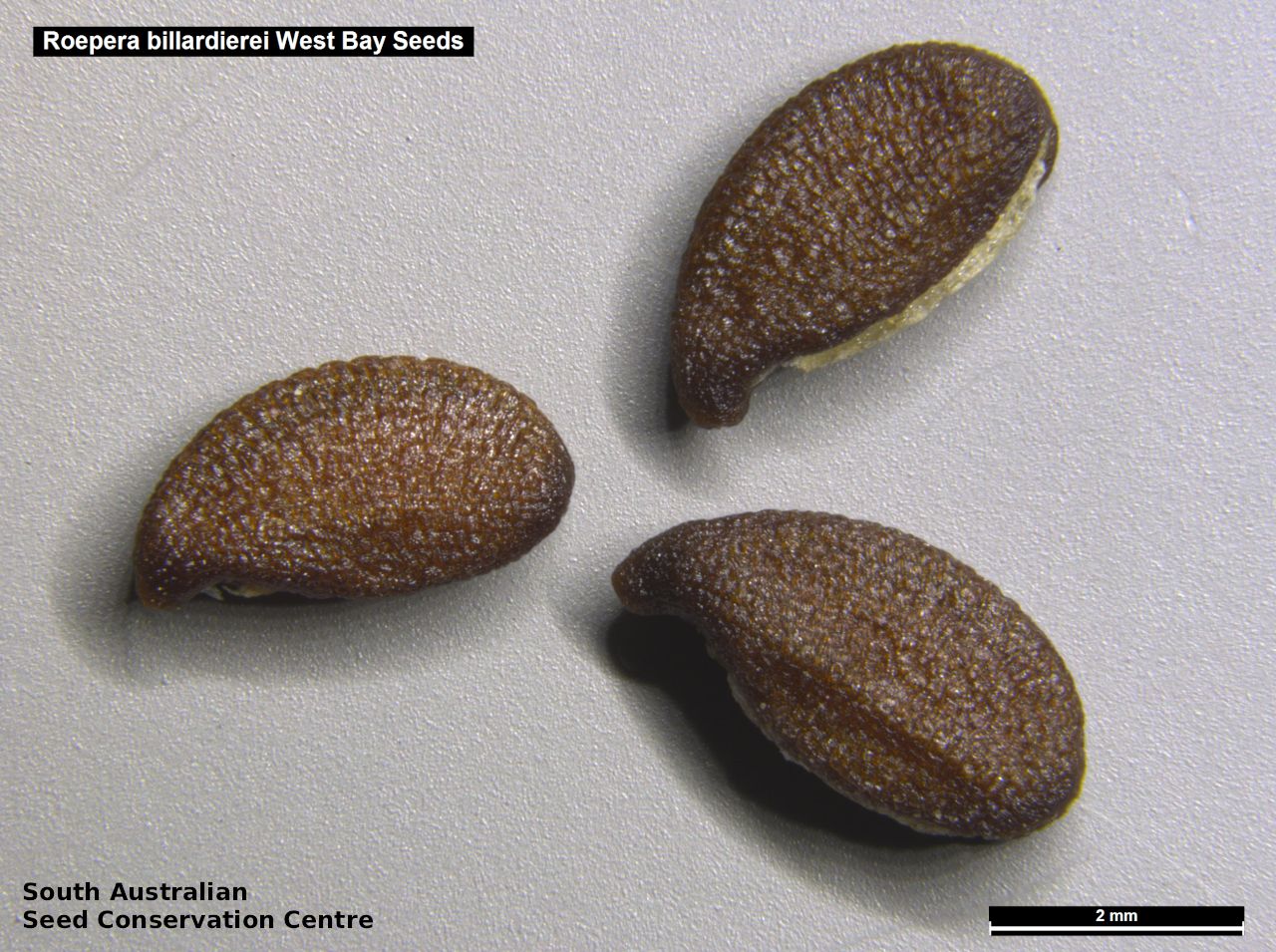

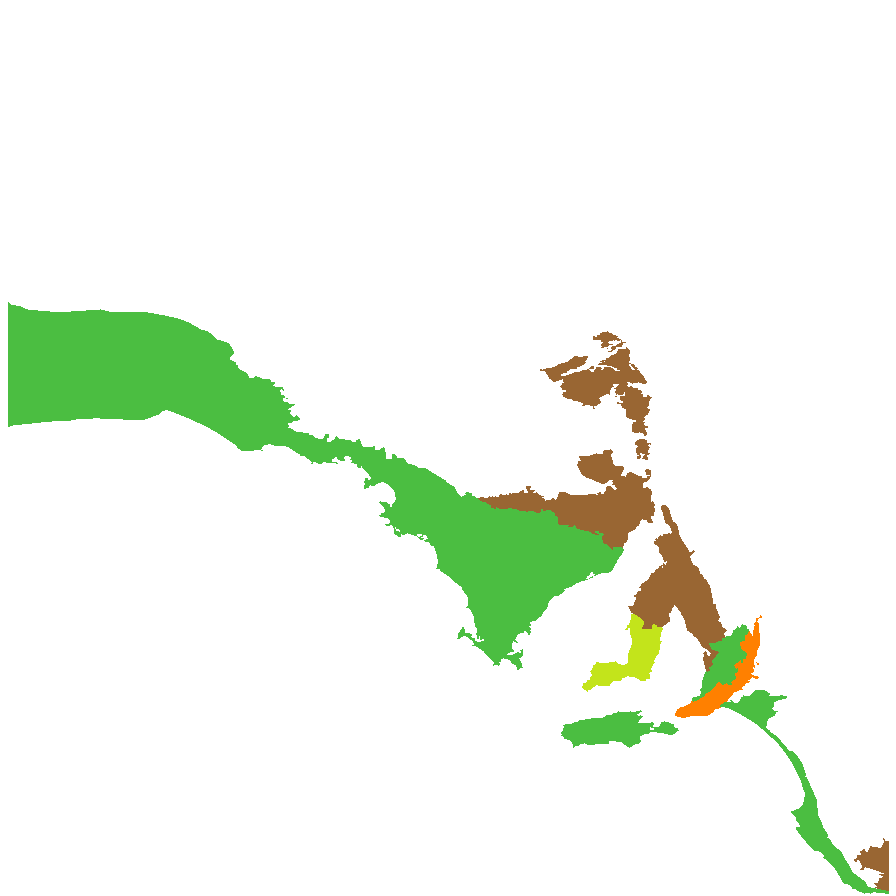
Botanical art
Prior names
Zygophyllum billardierei
Zygophyllum billardierei var. stenophyllum, partly
Zygophyllum ammophilum, partly
Common names
Coast Twinleaf
Etymology
Roepera (formally Zygophyllum which is from the Greek 'zygon' meaning pair and 'phyllon' meaning leaf; referring to the pair of leaflets making up each leaf) is named after Johannes August Christian Roeper (1801 -1885), a German botanist and physician. Billardierei named after Jacques Julien de La Billardiere (1755-1834), a French botanist who visited Western Australia and Tasmania with D'Entrecasteaux expedition and named many new plant species.
Distribution and status
Found along the coast of South Australia from the Nullarbor to the lower South-east, growing on coastal cliffs between rocks and sometimes scrambling along fences and stronger shrubs. Also found in Western Australia, Victoria and Tasmania. Native. Common in South Australia. Rare in Victoria and Tasmania. Common in Western Australia.
Herbarium regions: Nullarbor, Eyre Peninsula, Yorke Peninsula, Southern Lofty, Kangaroo Island, South Eastern, Green Adelaide
AVH map: SA distribution map (external link)
Plant description
Scrambling or ascending perennial herb or subshrub to 60 cm high with slender stems to 2 m long, sometimes climbing over taller plants. Leaflets oblong to linear, to 15 mm long and 12 mm wide, articulate at the base or continuous with the petiole, fleshy, apex rounded or truncate. Flowers yellow with petals usually twice as long as the sepals. Flowering between June and December. Fruits are brown papery capsule to 12 mm long, drooping, acutely 4-angled, obliquely truncate with a slight upward slope to the style, 1-2 seeds per cell. Seeds are dark brown, ovoid to 4 mm long and 2 mm wide, with a slight hook at the narrow end and a wrinkled surface. Seed embryo type is spatulate fully developed.
Seed collection and propagation
Collect seeds between October and March. Collect semi-dried and dried capsules by running your hands through the stems of the plant. Mature fruits will come off easily and will have a hard and dark seed inside each segment. Place the capsules in a tray and leave to dry for 1 to 2 weeks, depending on how green the fruit is. Then rub the dried capsules to dislodge the seeds. Use a sieve to remove the unwanted material. Store the seeds with a desiccant such as dried silica beads or dry rice, in an air tight container in a cool and dry place. Seed viability is usually high.